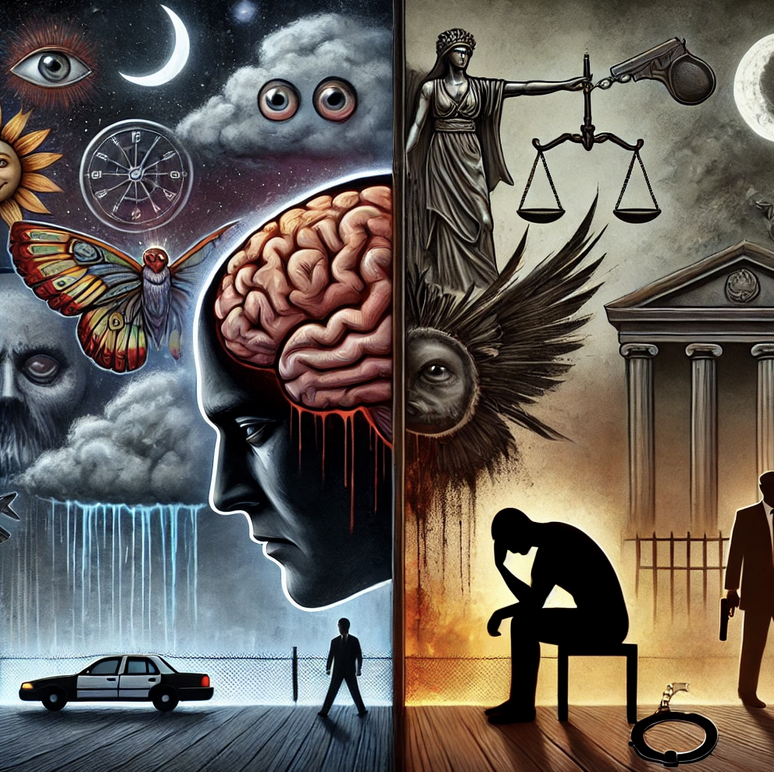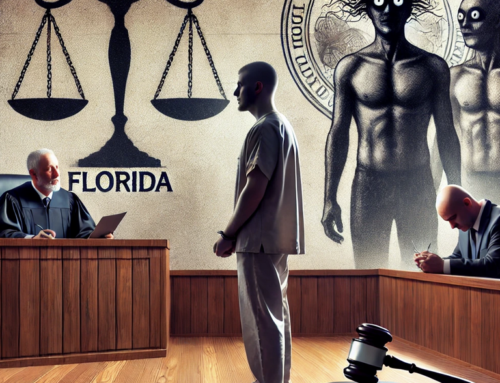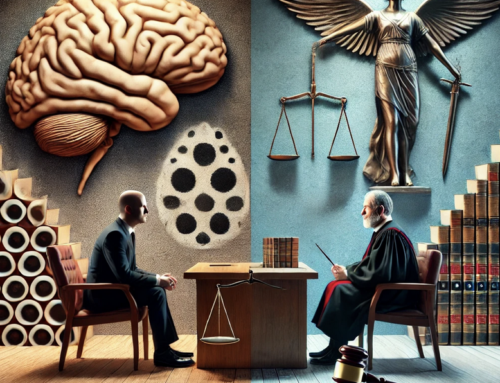Bipolar disorder (“BD”) is a mental illness affecting people from different areas all over the world, in which a person experiences what many would call extreme mood fluctuations often for no apparent reason. Ranked seventh on the list of non-fatal illnesses, it is considered one of the most costly disorders to affect humans. This post will explore topics such as: the differences between BD I, BD II, and other similar mental illnesses such as borderline personality disorder and cyclothymic disorder, what it is like to live with this illness, the structural differences of an afflicted brain, the benefits of treatment, and the prognosis of the disorder.
People with BD tend to change moods more rapidly than someone in the general population, many times without warning. Many psychiatrists will refer to this as a patient’s lability. This cycling of “highs” and “lows” is a trademark symptom of someone with BD, but does not automatically mean someone meets the diagnostic criteria. Many times this might not be very noticeable; depending on the person, these moods may last for days, or even months. Both BD I and II are similar in that moods tend to shift rapidly, but they do have their differences.
Those with bipolar I experience manic episodes. During a manic episode, which must last at least one week, someone may be excessively cheerful or euphoric; loud or rapid speech, extremely inflated self-esteem, and sexual promiscuity are not uncommon. If in a positive manic episode, the individual doesn’t see anything as being wrong, and their senses are often perceived as being much sharper than usual. Others may instead become very irritable or violent; they may engage in hostile behaviors, have temper tantrums, or become infuriated if interrupted. A depressive episode is not required for a diagnosis of BD I, although the majority of people that are diagnosed with BD I also experience depressive episodes at some point. Bipolar II is characterized as having hypomanic episodes, which are similar to that of a manic episode, just usually less pronounced, and only required to continue for at least four days. At least one episode of major depression is required for a diagnosis of BP II. In extreme cases, this may occur more than four times per year; being referred to as rapid cycling. 5-15% of individuals with BD II eventually have a manic episode, which then will result in a change of diagnosis to BD I. Because of the similar characteristics, a diagnosis is often confused between not only BD I and BD II, but other similar disorders.
If patients don’t meet the strict criteria of a manic, hypomanic, or major depressive episode, but do experience the same symptoms may then be given the diagnosis of cyclothymic disorder. Further adding to the confusion, borderline personality disorder (“BPD”) may be easily confused with the bipolar disorders due to the similar characteristics of both conditions. People are often misdiagnosed as having BD instead of the proper diagnosis of BPD, even though differences in the two have been found. For example, both have episodes of (hypo)mania or depression, although it has been shown those with BPD do not have the same emotional instability between these episodes as those with BD. The trigger for BPD is usually due to stimuli in the environment, while it is not always that way for BD. Further, the episodes with BPD rarely involve euphoria, while it is often seen in BD.
Along with the affective instability that is seen, those with bipolar disorders also have certain physiological differences in their brains. For example, it has been show there is a reduction in the size of the prefrontal cortex in those with the disorder, which is responsible for regulation of mood and emotions, as well as the integration between cognitive and emotional information; fMRI results show increased activation of the prefrontal cortex during verbal fluency tasks, but decreased activation during facial discrimination tasks. The striatum, and the lateral ventricles tend to be increased in size compared to the general population. An increased size in the amygdala has also been shown to be a characteristic of adults with BD, while teenagers with BD tend to have a reduced size; some researchers believe to suggest there is a disorder in the growth of the amygdala at puberty, which could contribute to development of the disorder later on in life. The amygdala is responsible for emotional comprehension as well as influencing production of emotional response. Differences in the size of the anterior cingulate and the hippocampus have also been noticed.
Aside from structural abnormalities of the brain, there are also chemical differences in the brain; this is determined by where in the cycle the patient may be. For example, during a major depressive episode, 5-hydroxyindoacutic acid (5-HIAA), the main metabolite to the neurotransmitter serotonin, is reduced in the cerebrospinal fluid of those afflicted. Dysfunction in the dopaminergic systems is also reported during both (hypo)manic and depressive episodes. Further, levels of the brain-derived neurotrophic factor, a special type of protein that promotes growth and maintaining neuronal function and connections, regulates neurotransmission, and plays a role in the ability to learn and long term memory storage, were shown to be reduced in periods of mania and depression.
Men and women diagnosed with BD both share the same general characteristics, but there are slight differences in how symptoms manifest. For example, the first episode at onset in males is 44% more likely to be a manic or hypomanic episode, while in females it is 78% more likely to be a major depressive episode. Statistically significant differences in the rates of comorbid diagnoses are also observed; Men with BD are more than twice as likely to be dependent on alcohol or marijuana, and four times more likely to have a co-occurring antisocial, or conduct disorder, or other behavioral problems. They are also reported to have more trouble holding a conversation during a (hypo)manic episode. On the other hand, women have higher reported rates of weight change and insomnia during episodes of depression. Also, women with BD are ten times more likely to develop an eating disorder within their lifetime
Due to the nature of this illness, bipolar disorder may cause problems in many aspects of a person’s life: friends/family, romantic relationships, career. Depending on how frequent or severe their episodes, may determine to what extent this illness can negatively affect their life or career. Compared to the general population, significantly more people with BD are single, have an income below the tenth percentile, or are on disability pension. The children of bipolar parents are also affected; they tend to have lower self-esteem, and a higher sensitivity to punishment, possible contributions to the development of the condition later on in life.
Criminal behavior in those with bipolar disorder may be due to any comorbid drug or alcohol abuse, along with the increased impulsivity that is common in these individuals. Those with bipolar disorder in which manic episodes are frequently experienced are at increased risk of repeat criminal offenses; several small studies have shown the proclivity for criminal behavior in BD to be similar to those with psychopathic tendencies.
Although are many people with bipolar disorders that live successful lives, with relatively little being carried over into their career life, approximately 30% of people with BD show severe impairment in work role function. How an individual approaches their illness, and whether they seek help also plays a role. Although there are some people who only have on episode in their lifetime, over 90% who have one manic episode will eventually go on to have more. It has been suggested that early identification and diagnosis, along with a plan of treatment may prevent a decline in social and occupational function. Ongoing depressive symptoms increase the risk of affective relapse and hurt the prognosis of the patient
The general consensus is that this condition is not only caused through physiological processes, but psychological, environmental, and social events can act as triggers or can even be used to help positively mediate the emotional responses. Mood stabilizers such as valproic acid, lithium, lamotigrine or carbamazepineare, are the main treatments used with those diagnosed with bipolar disorders. It has been shown that a combined approach consisting of pharmacological and behavioral therapy reduces depressive symptoms, and the number of hospitalizations in the lifetime of the patient Lithium-treated patients are noted to have larger amygdala, hippocampus and posterior subgenual geniculate cortex regions of the brain, suggesting pharmacological treatment may help counteract the loss of brain tissue which is associated with the disorder Although some treatment could reduce symptoms and improve the quality of life, 50-60% of patients with BD I fail to control symptoms with the use of lithium.
This review has shown how bipolar I and bipolar II differ from other similar illnesses such as borderline personality disorder or cyclothymic disorder, has given some examples of what it is like to have to live with this disorder, the risk of criminal behavior due to the illness, and showed the importance and benefits of treatment and how it can influence the prognosis of the condition. Bipolar disorder along with many other mental illnesses can be explained scientifically; there is a physical reason for their behavior. These brain abnormalities leave someone predisposed to certain behaviors; they may have less ability to control their actions than most of us would like to believe. A diagnosis of mental illness should be seen as a mitigating circumstance in the eyes of the court. An experienced criminal defense attorney may be able to make this argument in trial; the judicial system does not give as much weight to a diagnosis of mental illness as it should when determining the proper sentence upon conviction.
Bipolar Disorder and the Criminal Justice System: Understanding the Connection
Bipolar disorder, a mental health condition characterized by extreme mood swings, can have profound effects on an individual’s behavior and decision-making. These effects can sometimes lead to situations where a person with bipolar disorder becomes entangled in the criminal justice system. Understanding how bipolar disorder can lead to criminal charges is crucial for both legal professionals and society at large, as it highlights the need for compassionate and informed responses to mental illness. Bipolar disorder is a complex psychiatric condition that involves episodes of mania and depression. During a manic episode, an individual may experience elevated mood, increased energy, impulsive behavior, and a reduced need for sleep. Conversely, depressive episodes are marked by feelings of intense sadness, hopelessness, and lethargy. These mood swings can significantly impair judgment and behavior. For instance, during a manic episode, a person might engage in risky or illegal activities without fully understanding the consequences. On the other hand, during a depressive episode, a person may act out of despair, potentially leading to actions that result in criminal charges.
Common Criminal Charges Associated with Bipolar Disorder
- Assault and Aggression
- Manic episodes can lead to irritability and impulsive aggression, which may result in confrontations or physical altercations. If an individual with bipolar disorder becomes involved in a fight or acts aggressively toward others, they could face charges of assault or battery.
- Substance Abuse and Related Offenses
- Self-medication is a common issue among those with bipolar disorder, where individuals turn to drugs or alcohol to cope with their symptoms. This can lead to substance abuse charges, such as possession or DUI (driving under the influence). The erratic behavior during manic or depressive states can also increase the likelihood of being caught in illegal activities related to substance use.
- Theft and Fraud
- During a manic episode, the individual might engage in impulsive spending or theft, driven by an inflated sense of self-confidence or a need for instant gratification. This could lead to charges of shoplifting, credit card fraud, or other financial crimes.
- Domestic Violence
- Bipolar disorder can strain personal relationships, particularly when mood swings are severe. Manic episodes, characterized by impulsiveness and poor judgment, can lead to domestic disputes that escalate into violence, resulting in domestic violence charges.
- Public Disturbances
- Manic behavior can also manifest as disruptive actions in public, such as outbursts, erratic driving, or disorderly conduct. These actions can attract law enforcement attention and lead to criminal charges, especially if the individual becomes uncooperative or combative.
The Role of Mental Health in the Legal Process
When an individual with bipolar disorder is charged with a crime, it is crucial to consider their mental health in the legal process. Several key factors come into play:
- Competency to Stand Trial
- A defendant must be deemed competent to stand trial, meaning they understand the charges against them and can participate in their defense. In cases where bipolar disorder severely impairs cognitive function, the defense may argue that the individual is not competent to stand trial.
- Insanity Defense
- In some cases, the defense may argue that the defendant was not responsible for their actions due to a manic or depressive episode, using an insanity defense. This requires demonstrating that the individual could not distinguish right from wrong at the time of the offense due to their mental state.
- Sentencing Considerations
- If convicted, a person with bipolar disorder may be eligible for alternative sentencing options, such as mental health court or treatment programs, rather than traditional incarceration. These alternatives aim to address the root causes of criminal behavior and reduce recidivism by providing appropriate mental health care.
- Mitigation
- Mental health issues, including bipolar disorder, can be used as mitigating factors during sentencing. The court may consider the impact of the disorder on the individual’s behavior, potentially leading to reduced sentences or alternative sentencing options focused on treatment.
Challenges in Addressing Bipolar Disorder in the Criminal Justice System
Despite the recognition of bipolar disorder’s impact on behavior, there are significant challenges in addressing these cases within the criminal justice system:
- Lack of Awareness and Training
- Many legal professionals and law enforcement officers lack the training to recognize the symptoms of bipolar disorder, which can lead to misinterpretation of behavior and inappropriate responses.
- Stigma and Misunderstanding
- Bipolar disorder, like many mental health conditions, carries a stigma that can affect how individuals are treated by the justice system. There may be a tendency to view the disorder as an excuse for bad behavior rather than a genuine condition requiring treatment.
- Access to Mental Health Care
- Access to mental health care is often limited, especially for those involved in the criminal justice system. Without proper treatment, individuals with bipolar disorder may cycle in and out of the system, unable to break the pattern of behavior that leads to criminal charges.
Bipolar disorder can have a profound impact on an individual’s behavior, sometimes leading to criminal charges. It is essential for the criminal justice system to recognize the role of mental illness in these cases and to respond with compassion and understanding. By integrating mental health considerations into legal processes, we can provide more appropriate and effective responses to individuals with bipolar disorder, ultimately promoting justice and reducing recidivism.
References
American Psychiatric Association. (2013). Bipolar and Related Disorders in Diagnostic and Statistical Manual of Mental Disorders (5th ed.).
Antoniadis, D., Samakouri, M., & Livaditis, M. (2012). The association of bipolar spectrum disorders and borderline personality disorder. Psychiatric Quarterly, 83(4), 449-465.
Bauer, I., Sanchez, M., Suchting, R., Green, C., El Fangary, N., Zunta-Soares, G., Soares, J. (2014). Amygdala enlargement in unaffected offspring of bipolar patients. Journal of Psychiatric Research, 59(2014) 200-205.
Helle, K., Astrid, B., Arne, E., Bjoern, H., Ulrik, F., Ole, A., & Gunnar, M. (2010). Bipolar disorder patients have similar levels of education but lower socio-economic status than the general population. Journal of Affective Disorders, 129(1-3), 68-74.
Kawa, I., Carter, J., Joyce, P., Doughty, C., Frampton, C., Elisabeth Wells, J., Walsh, A. and Olds, R. (2005). Gender differences in bipolar disorder: age of onset, course, comorbidity, and symptom presentation. Bipolar Disorders, 7(2) 119–125.
Lahera, G., Bayon, C., Bravo-Ortiz, M., Rodriguez-Vega, B., Barbeito, S., Saenz, M., Avedillo, C., Villanueva, R., Ugarte, A., Gonzalez-Pinto, A., Dios, C. (2014). Mindfulness-based cognitive therapy versus psychoeducational intervention in bipolar outpatients with sub-threshold depressive symptoms: a randomized controlled trial. BMC Psychiatry, 2014(14), 215.
Pavlickova, H., Turnbull, O., Bentall, R. (2014). Cognitive vulnerability to bipolar disorder in offspring of parents with bipolar disorder. British Journal of Clinical Psychology, 2014(53), 386-401.
Reich, D., Zanarini M., Fitzmaurice, G. (2012). Affective lability in bipolar disorder and borderline personality disorder. Comprehensive Psychiatry, 2012(53), 230-237.








